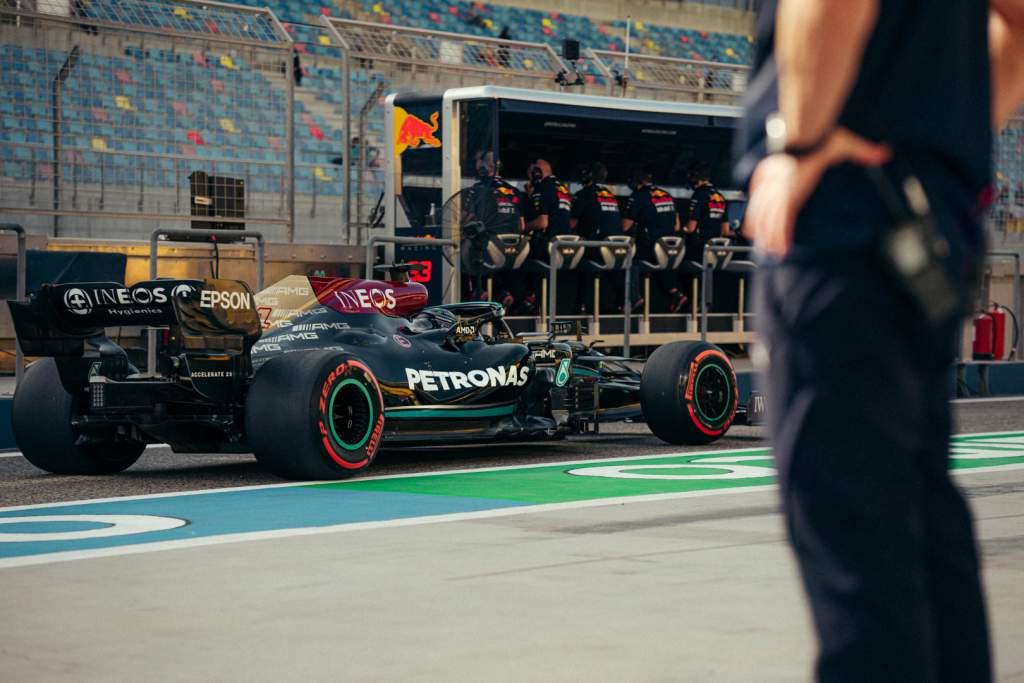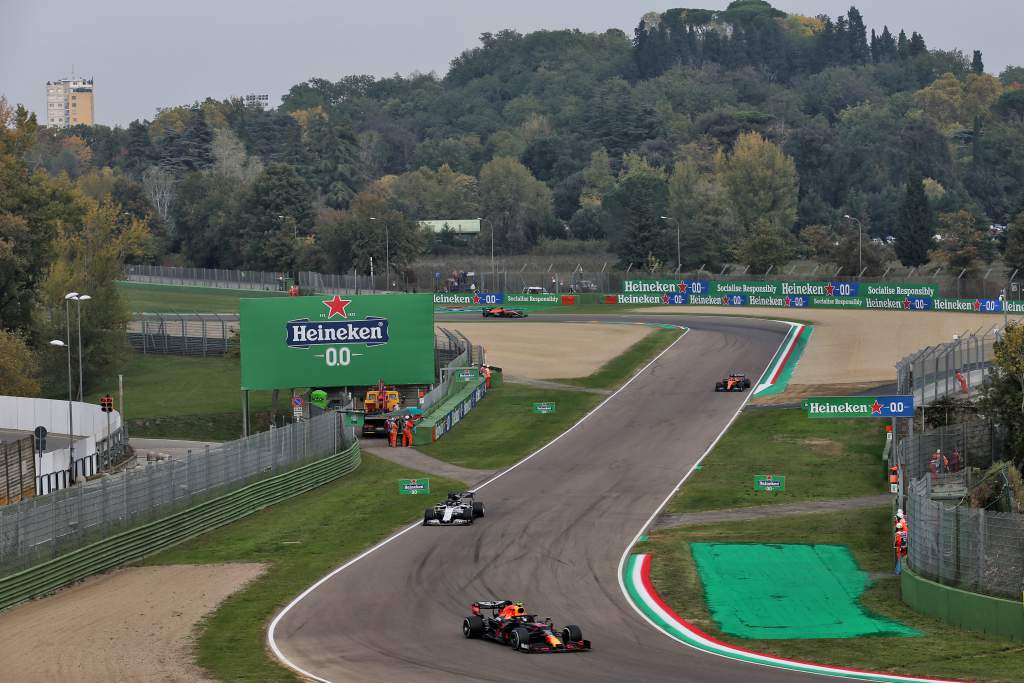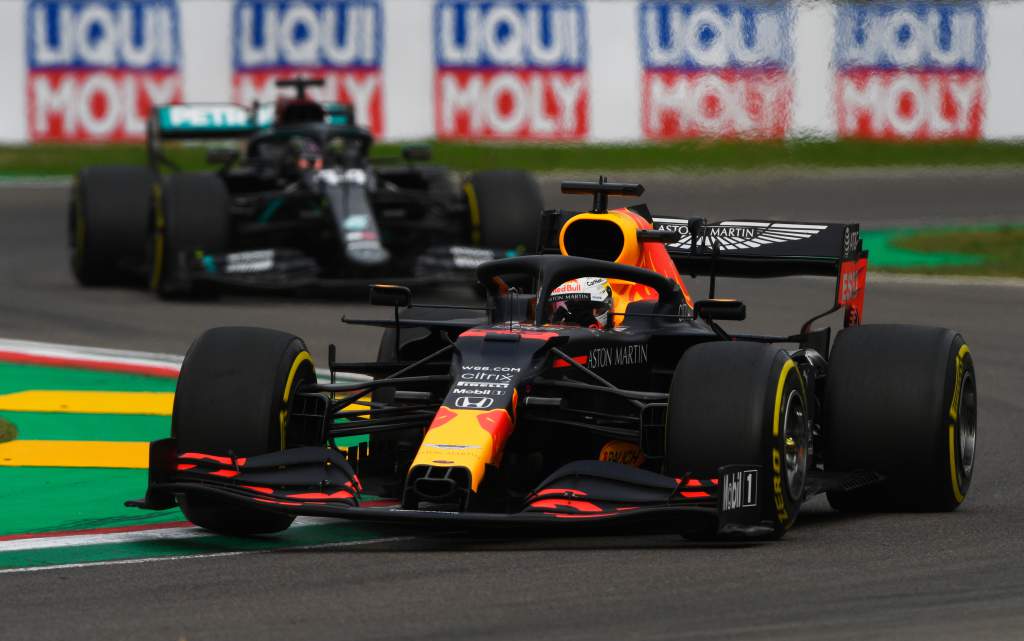Up Next

We have often criticised Red Bull for not starting the season as strongly as it should, costing it any chance of being in a world championship fight. But despite being beaten by Mercedes in Bahrain, it still heads into the Imola weekend as favourite.
In previous seasons, Red Bull has usually come away from the first race of the year ‘surprised’ that its performance wasn’t up to scratch. But this year, it was Mercedes that suffered after the Bahrain Grand Prix confirmed what pre-season testing indicated – that Red Bull was starting out with all guns blazing.
Aston Martin also had what team principal Otmar Szafnauer admitted was a “rude awakening” in qualifying in Bahrain. And what do Aston Martin and Mercedes have in common? The low-rake concept.

For those that haven’t been paying attention to the big technical talking point of the season so far, increased rake is when a team runs its cars with increased rear ride height. This creates more of a diffuser effect from the car’s underbody, and as such should produce more overall downforce.
It should also create that little extra opportunity to manage the diffuser airflow separation characteristics and allow the team to take advantage of this as opposed to it just happening and making the best out of it.
As the car increases in speed it is pushed towards the ground and at some point in that ride height change a section of the diffuser will stall. If this happens too abruptly or if the section that stalls is too large then the centre of pressure, which is the position on the car that the aerodynamic forces all join up and force the car downwards, will move forward. This is exactly what the driver doesn’t want or require.
If, using the extra ride height on the Red Bull, this can be controlled and managed better, then the centre of pressure can be manipulated rearward. giving the car a better. more driver confidence-inspiring balance in fast corners.
It will also allow the rear of the car to run softer, which will help when climbing over the kerbs. It’s very difficult to put the power down if the rear of the car is jumping around.
All tracks have some corners with similar characteristics, but Imola is fairly different to Bahrain in that there are a few downhill braking and corner-entry events. Into Acqua Minerali and Rivazza 1, the rear is critical. They both follow long straights, so any influence on the diffuser stall or re-attachment characteristics into those corners that the difference in rake might induce will mean the rear is very nervous on corner entry.

Joining the Red Bull high-rake club is not easy. It’s not just a matter of raising the rear ride height because it moves the rear suspension pickup points into a different area and all the allowance for the wishbone angularity change will be used up or even exceeded before the car runs on the track. I would be amazed if you didn’t need new suspension pickups at the very least.
But that’s not all. Aerodynamically, the car will be very different, its airflow generation and flow structure will alter dramatically and just to get back to the levels of downforce you currently have will probably take five or six races. This is why teams describe such a concept change as a long development process.
So even if the homologation regulations did allow you to make changes to suspension pickup points, the suspension itself and other structural parts – which this year they do not – it would be a questionable approach for the final six or so months before a rule change.
This means both Mercedes and Aston Martin will need to ask themselves the question, “do we just live with what we have and do the best we can?” or “do we go for it and, within what we are allowed to change, initiate developments?”.

It’s three weeks since the first race and I’m confident those questions will have been asked many times. We also need to remember that Mercedes still came away standing on the top step of the podium, so all is not lost, but those three weeks could be crucial.
Has Red Bull extended its advantage or has Mercedes added a flick here and gizmo there to at least close down that performance gap of around 0.4% a little bit?
Having the out-and-out speed is one thing, but points are only handed out on the Sunday. Being able to do sub-2s pitstops is fantastic, but being a tenth or two faster than your competition is only one part of the race strategy. Because of the undercut or overcut (but usually the undercut given the tyres and lack of refuelling), if you get your pitstop timing wrong by a lap or two you can lose two or three seconds very quickly. As Mercedes showed in Bahrain, track position is everything.
We will know a little more when the chequered flag falls at Imola, but I’m sure there will also be more questions created than answered. As always, it will probably be five or six races into the season before we start to get a consistent picture, but at least a race at a different track will give us a little more information on how the pace difference between Red Bull and Mercedes will shift from track to track.
But I hope Imola is as good Bahrain, just with a few more drivers in the mix for the podium positions. If I was a betting man, I would be looking at AlphaTauri having a good weekend.





